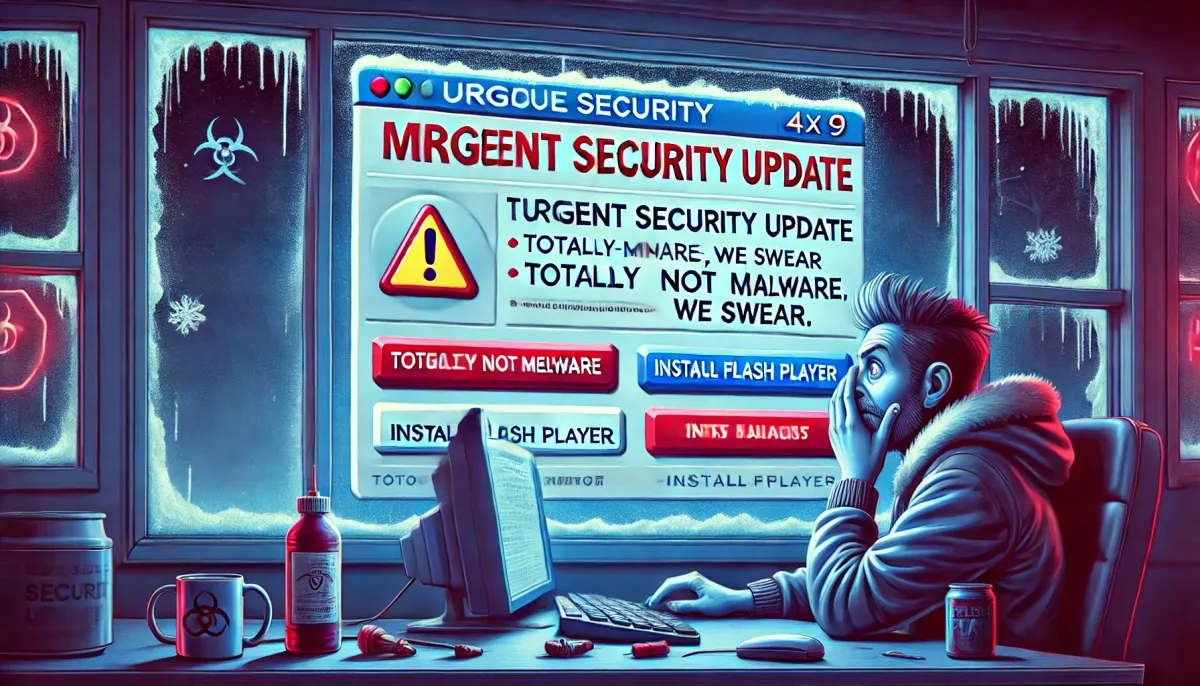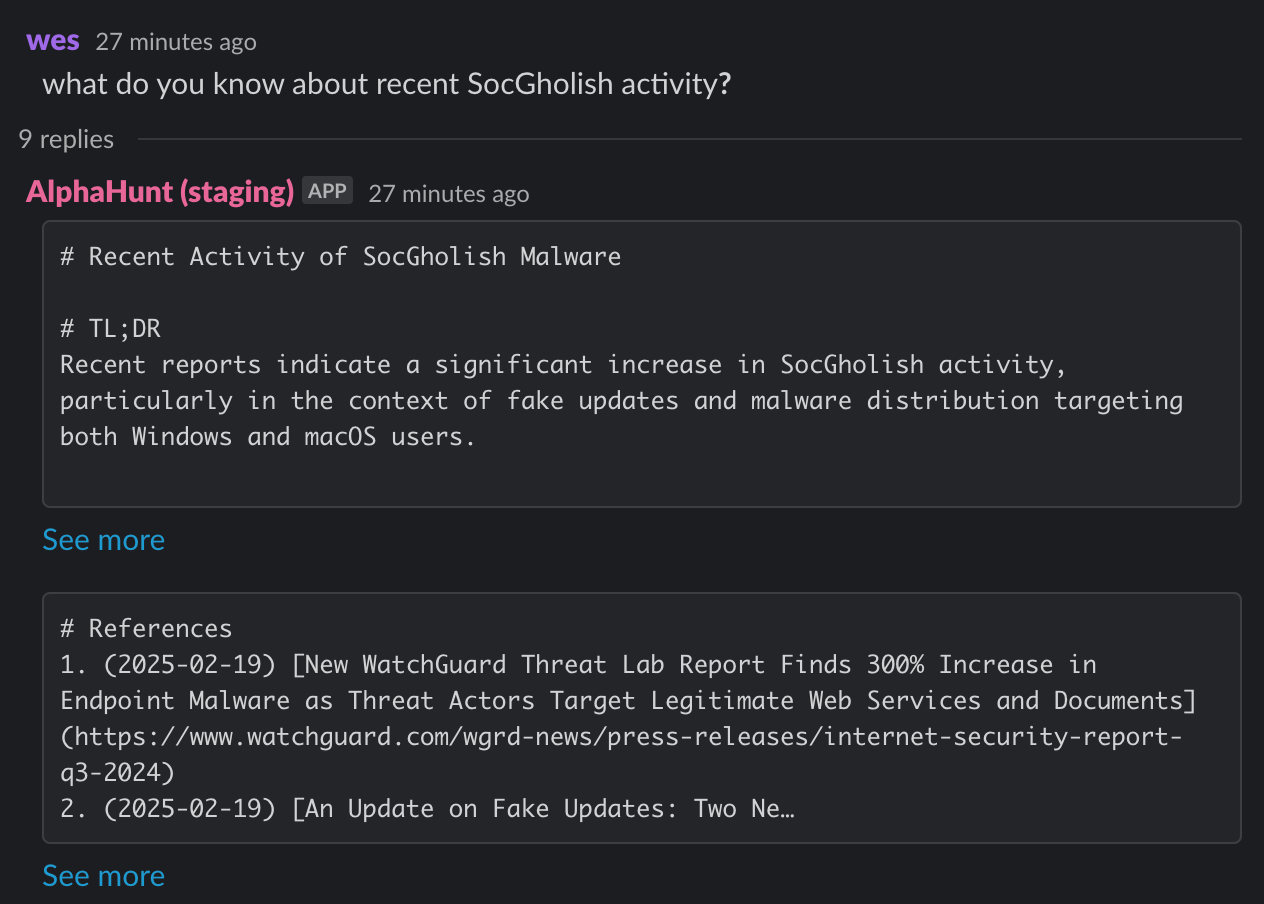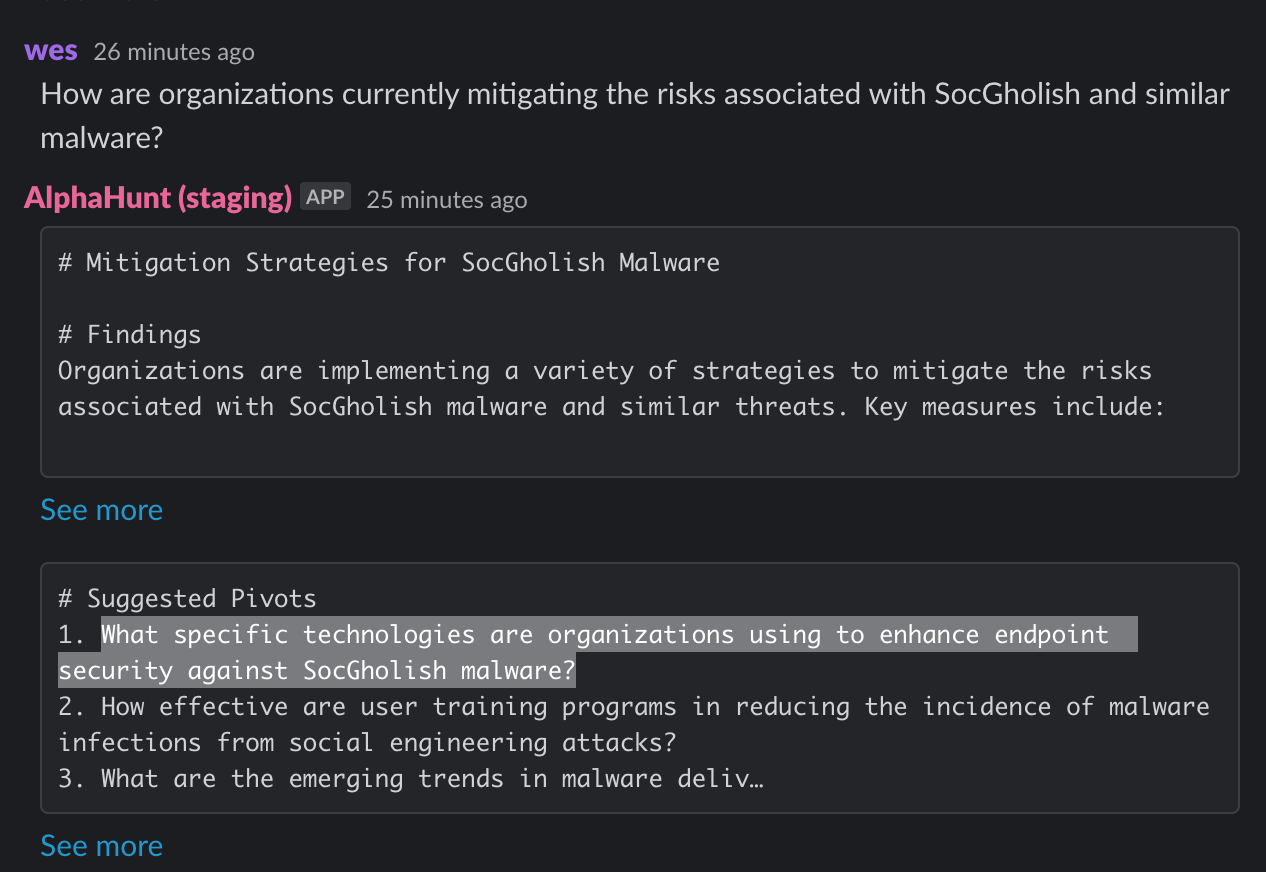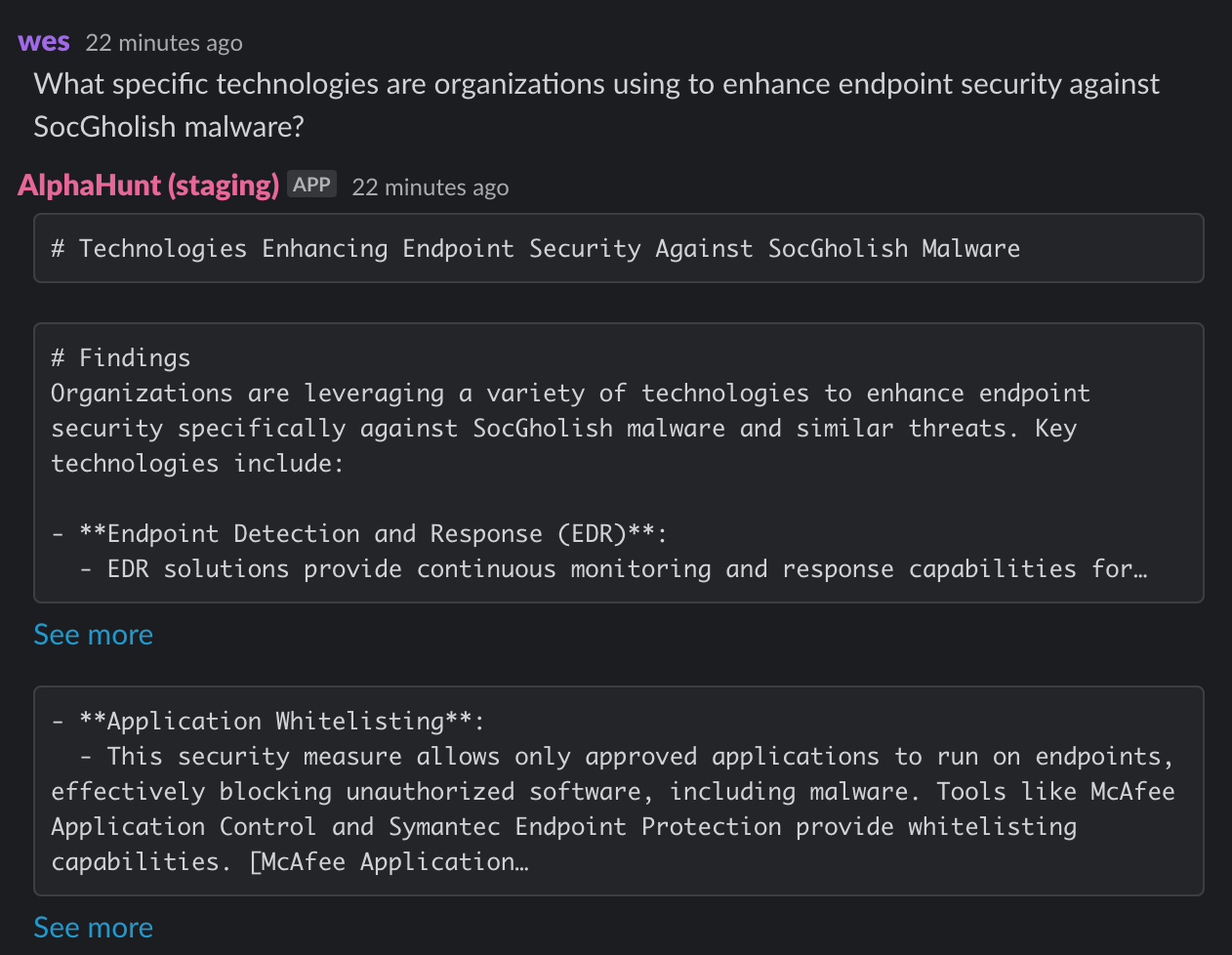SocGholish Malware: Advanced Detection and Prevention Strategies
The detection of SocGholish malware has advanced through techniques like behavioral analysis, signature-based detection, and anomaly detection. These methods are crucial due to the malware's ability to change its code and employ unique delivery methods.





Suggested Pivots- what AI was meant for.. helping you figure out where to go next.
EDITOR'S NOTE: I'm testing the next generation of the AlphaHunt- the research goes a bit deeper, a bit more directed and a bit more "peer" reviewed. The layout may still need some work... feedback welcome (just hit reply! :))
Thanks for taking the time to subscribe and read these, if they bring you value, just hit reply and let me know!
TL;DR
Key Points
-
- Behavioral and Anomaly Detection: Essential for identifying SocGholish malware due to its evolving nature and unique delivery methods.
- Implement multi-layered detection strategies combining behavioral analysis, signature-based detection, and anomaly detection.
-
- Endpoint Security and User Training: Critical in preventing SocGholish infections.
- Invest in advanced endpoint protection and comprehensive user training programs to mitigate risks.
-
- Evasion and Distribution Challenges: SocGholish uses sophisticated evasion techniques and complex distribution methods.
- Continuous monitoring and updating of detection mechanisms are necessary to counteract these challenges.
-
- Emerging Trends: SocGholish is increasingly integrated with other malware and targeting mobile platforms.
- Enhance threat intelligence capabilities and adapt security measures to address these evolving threats.
Summary
The detection of SocGholish malware has advanced through techniques like behavioral analysis, signature-based detection, and anomaly detection. These methods are crucial due to the malware's ability to change its code and employ unique delivery methods. Reports emphasize the need for multi-layered detection strategies to enhance capabilities.
Prevention strategies focus on endpoint security solutions, web application firewalls, and user training programs. Advanced endpoint protection platforms using machine learning and behavioral analysis are vital for real-time threat detection. User education on phishing and social engineering is also essential.
Technical challenges include SocGholish's evasion techniques, complex distribution methods, and rapid evolution. Organizations must continuously monitor and update detection mechanisms to keep pace with these changes.
Case studies highlight successful mitigation through threat hunting initiatives, multi-layered security approaches, and incident response plans. Emerging trends show an increase in Phishing-as-a-Service campaigns, integration with other malware, and a focus on mobile platforms. Organizations are adapting by enhancing threat intelligence and investing in advanced detection technologies.
Technical Analysis of "SocGholish" Malware Detection and Prevention Mechanisms
Detection Techniques
The detection of SocGholish malware has evolved significantly, utilizing various methodologies and technologies. Key detection techniques include:
-
Behavioral Analysis: This method focuses on monitoring the behavior of applications and users to identify anomalies that may indicate a SocGholish infection. Behavioral analysis can detect unusual patterns, such as unexpected network connections or file modifications.
-
Signature-Based Detection: Traditional antivirus solutions often rely on signature-based detection, which involves identifying known malware signatures. However, as SocGholish evolves, this method alone may not be sufficient due to the malware's ability to change its code to evade detection.
-
Anomaly Detection: This technique involves establishing a baseline of normal behavior within a network and identifying deviations from this baseline. Anomaly detection can be particularly effective against SocGholish, as it often employs unique delivery methods and payloads.
Recent reports from Proofpoint highlight the increasing complexity of detecting SocGholish due to its use of fake updates and social engineering tactics. The report emphasizes the need for multi-layered detection strategies that combine behavioral and signature-based methods to enhance detection capabilities.
Prevention Strategies
Organizations are implementing various preventive measures to protect against SocGholish malware, including:
-
Endpoint Security Solutions: Advanced endpoint protection platforms are crucial for detecting and blocking SocGholish infections. These solutions often incorporate machine learning and behavioral analysis to identify threats in real-time. For example, machine learning algorithms can analyze user behavior and flag anomalies that may indicate a SocGholish infection.
-
Web Application Firewalls (WAFs): WAFs can help mitigate the risk of SocGholish by filtering and monitoring HTTP traffic to and from web applications. Specific configurations, such as blocking known malicious IP addresses and filtering out suspicious request patterns, can effectively block SocGholish attempts.
-
User Training Programs: Educating users about the risks of phishing and social engineering is essential. Organizations are increasingly investing in security awareness training to help employees recognize and avoid potential SocGholish attacks.
Insights from ReliaQuest indicate that understanding the infection chain of SocGholish is vital for developing effective prevention strategies.
Technical Challenges
Organizations face several technical challenges in combating SocGholish malware:
-
Evasion Techniques: SocGholish employs sophisticated evasion techniques, such as using fake browser updates and leveraging compromised websites to deliver its payload. This makes it difficult for traditional security measures to detect and block the malware.
-
Complex Distribution Methods: The distribution of SocGholish is often multi-faceted, involving various channels such as phishing emails, malicious advertisements, and compromised websites. This complexity complicates the detection and response efforts.
-
Rapid Evolution: The malware's ability to rapidly evolve and adapt to new security measures poses a significant challenge for organizations. Continuous monitoring and updating of detection mechanisms are necessary to keep pace with these changes.
Intel 471's threat hunting case study provides further insights into the challenges posed by SocGholish and highlights the need for proactive threat hunting strategies.
Case Studies and Real-World Examples
Several organizations have successfully mitigated SocGholish threats through effective strategies:
-
Threat Hunting Initiatives: A case study from Malware News illustrates how a proactive threat hunting initiative helped an organization identify and neutralize a SocGholish infection before it could cause significant damage.
-
Multi-Layered Security Approaches: Organizations that implemented multi-layered security approaches, combining endpoint protection, user training, and web filtering, reported a significant reduction in successful SocGholish attacks.
-
Incident Response Plans: Developing and regularly updating incident response plans has proven effective in minimizing the impact of SocGholish infections. Organizations that practiced incident response simulations were better prepared to handle real-world attacks.
Emerging Trends
Emerging trends in SocGholish's tactics, techniques, and procedures (TTPs) include:
-
Increased Use of Phishing-as-a-Service (PhaaS): The rise of PhaaS kits has made it easier for cybercriminals to launch SocGholish campaigns, as these kits provide ready-made phishing templates and infrastructure.
-
Integration with Other Malware: SocGholish is increasingly being integrated with other malware strains, creating hybrid threats that are more challenging to detect and mitigate.
-
Focus on Mobile Platforms: Recent trends indicate a shift towards targeting mobile platforms, with SocGholish campaigns adapting to exploit vulnerabilities in mobile browsers and applications.
Organizations are adapting their security postures by enhancing their threat intelligence capabilities and investing in advanced detection technologies to counter these emerging trends.
References
- (2025-02-19) - An Update on Fake Updates: Two New Actors, and New Mac Malware
- (2025-02-19) - SocGholish Malware Dropped from Hacked web pages using ...
- (2025-02-19) - Threat hunting case study: SocGholish - Malware News
- (2025-02-19) - New WatchGuard Threat Lab Report Finds 300% Increase in ...
- (2025-02-19) - Blog: Stay Ahead of Cyber Threats - Intel 471
Recommendations, Actions, Suggested Pivots, Forecasts and Next Steps..
(Subscribers Only)





![[DEEP RESEARCH] Zero-Days Are a Distraction: 2025’s Biggest Losses Were Stolen Tokens + OAuth](/content/images/size/w600/2025/12/zz-3.png)